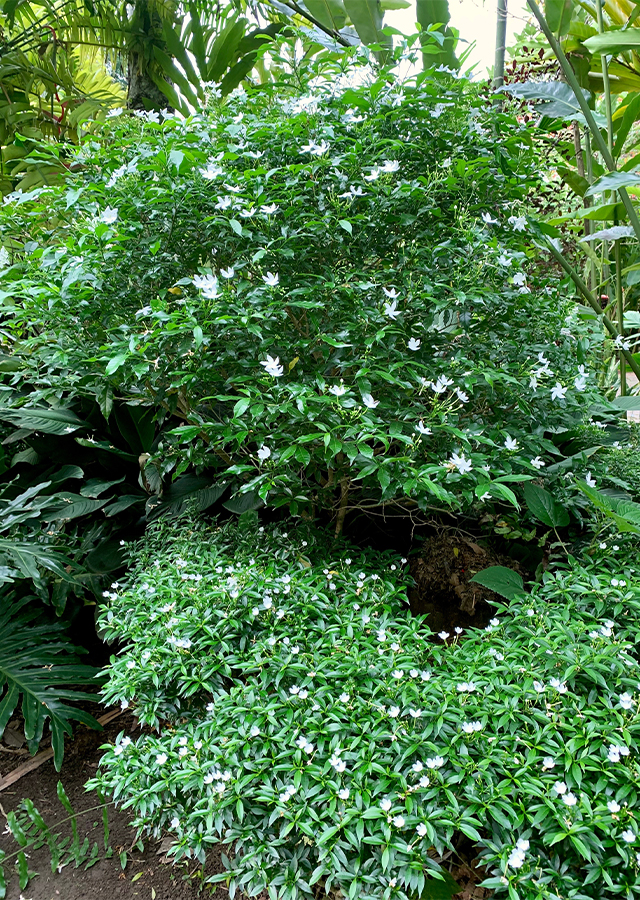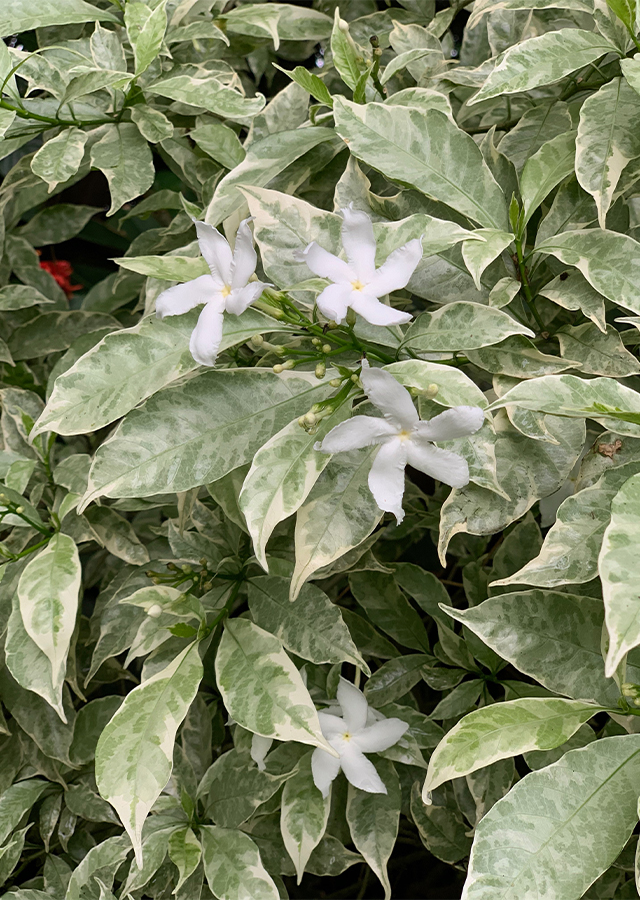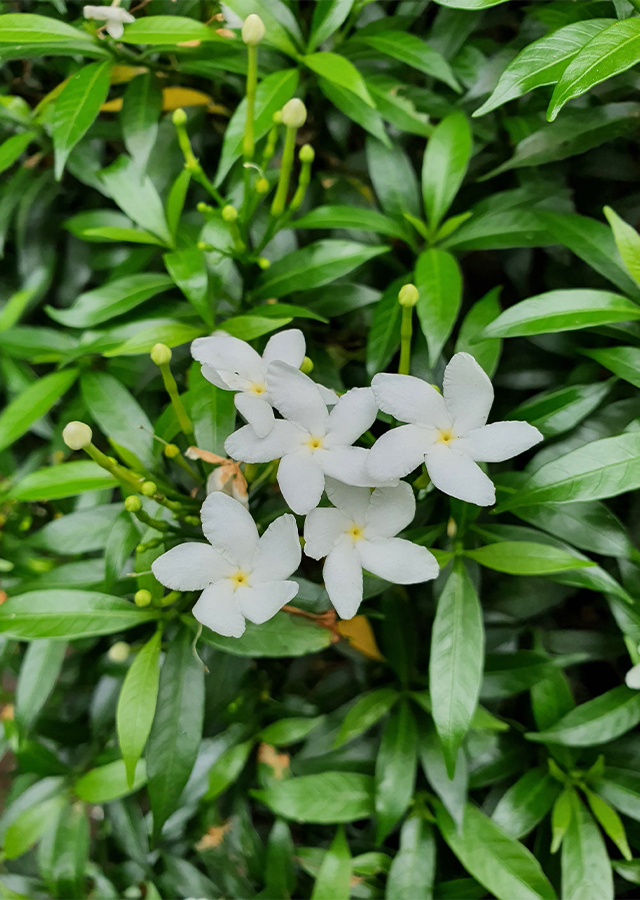Crepe Jasmine
Tabernaemontana divaricata (L.) R.Br. ex Roem. & Schult.
Apocynaceae
Location in our garden
Principal



Synonym
Ervatamia coronaria (Jacq.) Stapf
Ervatamia divaricata (L.) Burkill
Ervatamia divaricata var. plena (Roxb. ex Voigt) M.R.Almeida
Habitus
Shrubs. A shrub or little tree, 0.5-2(-5) m tall.
Part Used
Leaves
Bark
Flowers
Latex
Roots
Twigs
Growing Requirements
Full Sunshine
Need Shade
Habitat
Forest
Mountains
Overview
Native in northern and eastern India, Nepal, Bhutan, Bangladesh, Burma (Myanmar), northern Thailand and southern China. Developed throughout the tropics for its ornamental and fragrant flowers.
Vernacular Names
Coffee rose (double-flowered plants), East-Indian rose-bay (English), Bunga manila (Moluccas), Bunga nyingin (Balinese), Mondokaki (Javanese) (Indonesia), Bunga susu, Susok ayam, Susun kelapa (Malaysia), Pandakaking-tsina (Tagalog) (Philippines), Phut sa, Phut suan (Central) (Thailand), Bánh hỏi, Ngọc bút (Vietnam).
Agroecology
T. divaricata is more commonly found in light forest areas than not on slopes from sea level to 1400 m altitude.
Morphology
- Stem - 3-10 cm in diameter.
- Leaves - curved to barely circular, 3-18 cm × 1-6 cm, 2.2-4 times longer than wide, pinnacle acuminate, petiole 3-10 mm long.
- Inflorescence - or maybe remiss, 3-14 cm × 3-8 cm, 1-30-flowered.
- Flowers - sweet-scented, open amid the day, sepals pale green, corolla in develop bud 21-35 mm long with a comparatively wide ovoid or some of the time globose head for 25-40% of the length, pinnacle intense or uncaring, tube (6-)7-10 times longer than the calyx, 15-27 mm long, bent 0.1 turn or not fair underneath the anthers.
- Fruits - comprising of 2 partitioned mericarps, diagonally and barely ellipsoid or pod-like, with 2 horizontal edges at each side and an adaxial indented line of dehiscence, orange, ruddy or green, 2-10-seeded, aril profound orange or ruddy.
Cultivation
Propagated by seeds and stem cuttings.
Chemical Constituents
Alkaloids, tannins, resins, amino acids,flavonoids, saponins, phenols, glycosides,steroids, triterpenoids, and fixed oils.
Traditional Medicinal Uses
- In Peninsular Malaysia and Thailand, the root is applied to the sore eye, but in India, the same complaint is treated using flowers mixed with oil.
- In Indonesia, a decoction of the roots is used as an astringent for stomach ulcers and various stomach complaints.
- In Thailand, this plant is used as a remedy for vomiting.
- In Indo-China, a mixture of the roots is used as a fever medicine.
- In India, this plant is used as a gastro-intestinal, urogenital and skin medicine.
- In northern India, the sap is applied as a coolant to keep wounds from getting worse. The root is used as an anodyne and chewed to help toothaches.
Part Used
Reference Sources
- van Valkenburg, J.L.C.H. and Bunyapraphatsara, N. (Editors), 2002. Plant Resources of South-East Asia No 12(2). Medicinal and poisonous plants 2. Prosea Foundation, Bogor, Indonesia. 782 pp.


